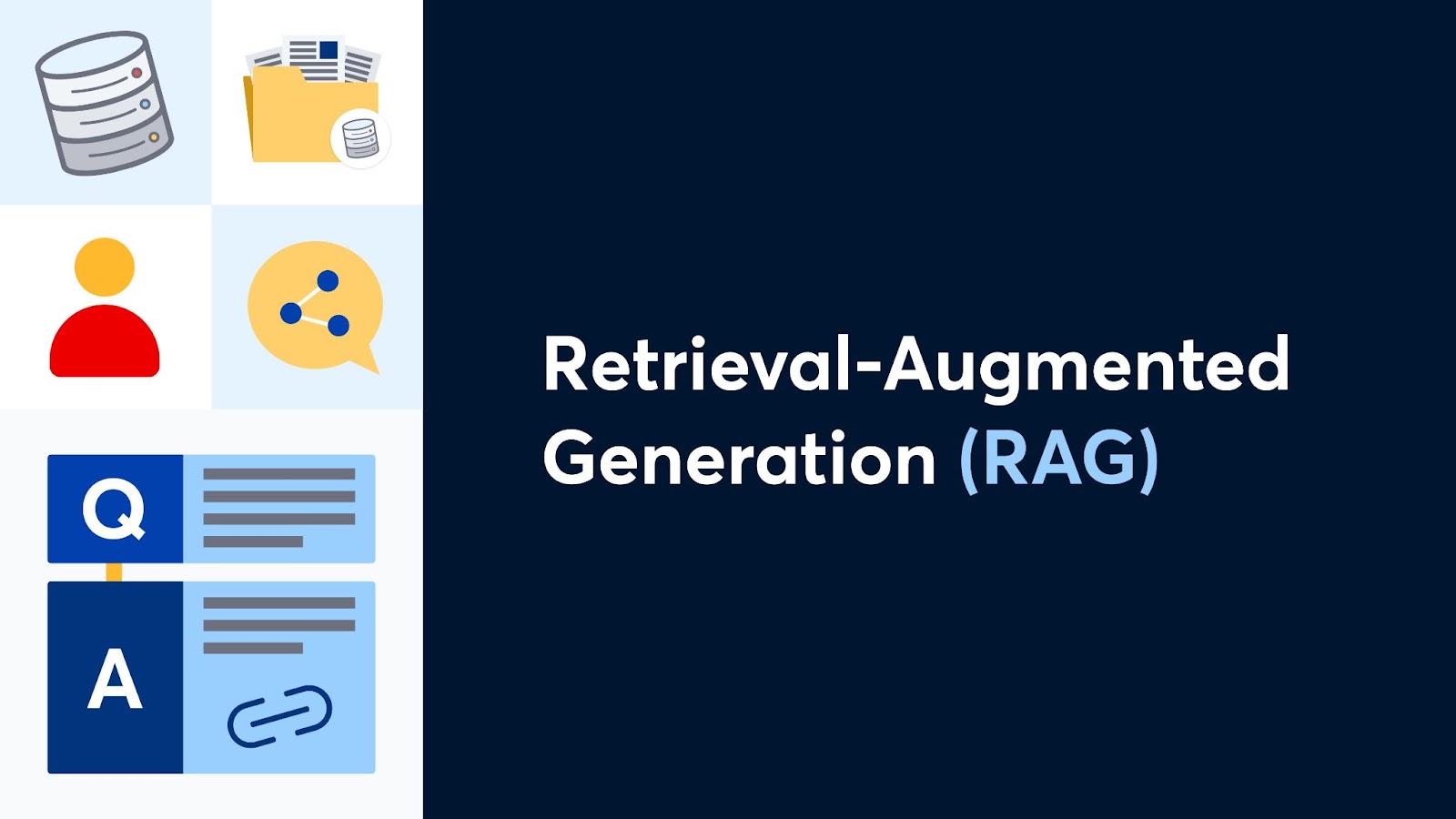Imagine having a conversation with a computer program that can understand your questions and provide helpful answers just like a human would. This is where chatbots come in! Chatbots are computer programs designed to simulate human-like conversations.
One particular type of chatbot is the Retrieval-Augmented Generation (RAG) chatbot, which combines the power of retrieval and generation models to provide even more accurate and relevant responses.
What is a Retrieval-Augmented Generation Chatbot
A Retrieval Augmented Generation (RAG) chatbot is an advanced chatbot that combines two essential components: retrieval and generation models.
The retrieval model helps the chatbot search through a vast amount of stored information to find relevant answers. It uses techniques like indexing and algorithms to quickly locate the most suitable information based on the user’s query.
On the other hand, the generation model is responsible for generating responses from scratch based on the retrieved information and the conversation context. By combining retrieval and generation, RAG chatbots can provide more accurate and context-aware responses, making the conversation feel more natural and human-like.
The architecture of a Retrieval-Augmented Generation Chatbot
The architecture of a Retrieval-Augmented Generation (RAG) chatbot, often referred to as the “RAG pipeline,” includes several integral components. At its heart lies the retrieval model, tasked with sifting through stored data to find answers that align with the user’s query.
This model utilizes sophisticated indexing and retrieval algorithms to efficiently pinpoint the most relevant information. Following this phase, the generation model activates once the retrieval model has provided the necessary data. It processes this information along with the current conversational context to create a response that is both accurate and fitting. This response is then conveyed to the user.
In the RAG pipeline, the retrieval and generation models work collaboratively to ensure that the information fetched is accurate and relevant, enabling the generation model to deliver context-aware responses.
Steps To Make a Retrieval Augmented Generation Chatbot
Step 1: Gathering and Refining Data
The first step to building a functional chatbot is to gather and refine your data. It is important to collect ample, varied, and relevant data from various sources, such as customer interactions, online discussions, chat records, or any text data that aligns with your chatbot’s purpose.
Once you have gathered the data, it needs to be refined. This involves tasks like data purifying to remove duplicates and unnecessary information that could disrupt the model. Tokenization is also necessary, as it breaks down sentences into smaller parts like words or subwords, making it easier for the retrieval model to analyze and compare text.
Additionally, stemming and lemmatization can be applied to simplify words to their basic form, aiding in identifying different versions of the same word. Lastly, the data should be split into training, validation, and test sets to train the model, fine-tune it, and evaluate its performance.
Step 2: The Ideal Retrieval Mode
Choosing the right retrieval model is crucial for the success of a chatbot in locating useful data. Several retrieval models are available, each with its own benefits and drawbacks. For instance, BM25 (Best Matching 25) is known for its straightforwardness and efficiency, using probabilities to rank files based on keyword relevance.
TF-IDF (Term Frequency-Inverse Document Frequency) is an older model that ranks the value of words in files, assigning importance to terms. High-tech models like BERT (Bidirectional Encoder Representations from Transformers) or T5 (Text-to-Text Transfer Transformer) create comprehensive document maps and grasp the deep meaning of the text, often resulting in better matches and findings.
When choosing a retrieval model, it’s important to consider your data type, the specific needs of your chatbot, and the computational resources available, as different models yield different retrieval results.
Step 3: Arranging the Data
The data needs to be arranged through indexing to expedite the search process. Indexing allows the search program to find relevant information when responding to user questions quickly.
One common method is the inverted index, which functions like a dictionary by associating words and phrases with the documents where they are found. This significantly speeds up searching, particularly when looking for specific words. Another method is the sparse vector index, where documents and questions are transformed into sparse vectors resembling barcodes.
Each bar in the code represents a word in the search vocabulary. This indexing method is particularly powerful when working with strong vector models like BERT. Additionally, graph-based indexing forms a network of linked documents or passages, which proves beneficial in highlighting relationships and links between documents.
The choice of indexing method depends on the retrieval model and specific needs of your chatbot, as each method offers its advantages.
Step 4: Implementing Retrieval Algorithms
Retrieval algorithms are responsible for finding the relevant data based on user search terms and comparing them with the indexed data to determine the best match. The choice of algorithm depends on the retrieval model and how the data is indexed.
One traditional algorithm is the Vector Space Model (VSM), which pairs with TF-IDF and other dense vector models. It represents search terms and documents as vectors and measures similarities to rank documents. For BM25 models, the BM25 scoring algorithm is used, ranking documents based on their relevance to the search terms by considering term frequencies and adjusting for document length.
Models like BERT utilize dense vectors and focus on finding matches in terms of meaning by exploring the similarity between search vectors and document vectors. The selection of retrieval algorithms significantly impacts the search model’s effectiveness and determines how well the chatbot can retrieve relevant information based on user queries.
Step 5: Validation and Fine-Tuning
It is essential to validate the efficiency of the search model before deploying it to ensure accurate and relevant results. Validation involves comparing the model’s outputs with data labelled by humans or expert decisions. Various metrics can be used for validation, such as precision, recall, F1 score, and mean average precision.
This validation process helps assess the model’s performance and identify areas for improvement. Fine-tuning is the subsequent step, which aims to polish the search model based on the validation results.
Adjustments can be made to the model’s settings, retraining can be performed, or alterations can be made to the indexing approach to enhance the model’s accuracy and overall performance. The focus during fine-tuning is to make the search model as correct and significant as possible, aligning it with the desired outcomes of the chatbot.
Step 6: Scaling and Optimization
As the chatbot gains popularity and the user demand increases, scaling and optimizing the retrieval model become important. This involves strengthening the foundation of the retrieval model by incorporating distributed computing and implementing load-balancing techniques.
The retrieval model can handle more queries and provide faster responses by leveraging distributed computing. Load balancing ensures that the workload is evenly distributed among multiple servers or instances, preventing any single component from being overwhelmed. Additionally, continuous monitoring is essential to adapt to changes in user behaviour and information sources. By keeping track of user interactions and feedback, the retrieval model can be optimized to ensure it remains effective and reliable.
Regular updates and improvements to the retrieval model will enable the chatbot to consistently provide accurate and relevant information to users, even as the demands on the system increase over time.
Conclusion
In conclusion, Retrieval Augmented Generation (RAG) chatbots offer an exciting breakthrough in chatbot technology. RAG chatbots can provide accurate, context-aware, and personalized responses by combining retrieval and generation models.
The retrieval model enables efficient search through vast information, ensuring up-to-date and reliable answers. The generation model takes retrieved information and conversation context to produce natural and human-like responses.
The importance and benefits of RAG chatbots are evident in their ability to deliver highly relevant and personalized interactions. They excel at handling diverse queries and can assist with information retrieval, problem-solving, and engaging conversations. RAG chatbots represent a significant advancement, enhancing user experiences by bridging the gap between humans and intelligent conversational agents.


